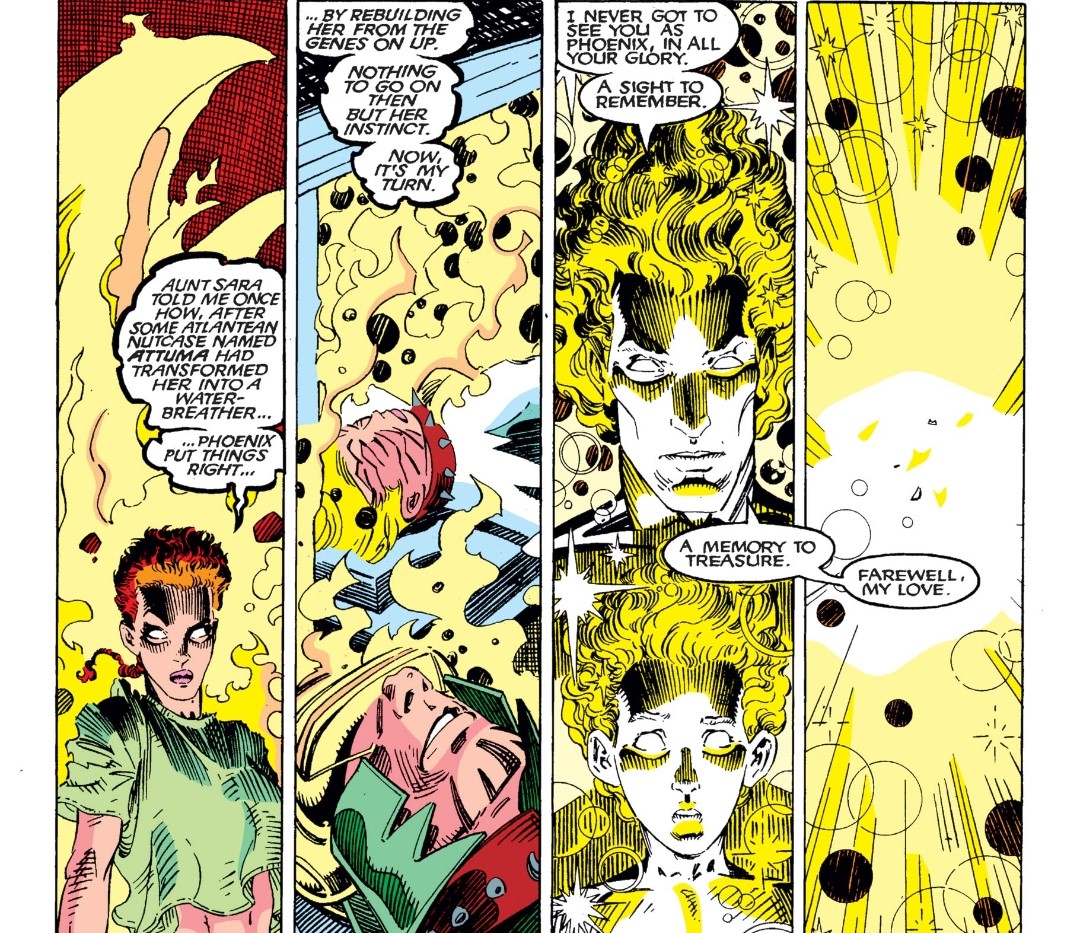
In UXM #168, Nightcrawler is presented (and presents himself) as an object of sexual display to be consumed by both his on-panel girlfriend and by the reader, all in an homage to a landmark photographic spread with a deep impact on the sexual revolution. #xmen 1/10 

The image references Burt Reynolds’ famous 1972 Cosmopolitan nude centrefold, an historic image that is credited with, among other things, inspiring Doug Lambert to create Playgirl Magazine the following year. Reynolds recounts the development as such: 2/10 

“Although no one had ever shown a naked man in a magazine before, Helen [Gurley Brown, editor of Cosmopolitan] believed women have the same "visual appetites" as men, who'd been looking at naked women in Playboy since 1953… 3/10 

…She wanted the same prerogative for women. It would be a milestone in the sexual revolution, and she said I was the one man who could pull it off.” 4/10 

In this sense, the image that Smith was creating an homage to had a clear purpose of equalizing sexualized portrayals in magazine periodical spreads. Drawing on that image could thus be seen to do (or aim to do) the same thing for comics. 5/10 

Supporting this, the panel is narrativized from Amanda’s perspective, thus presenting Kurt as an offering to a sexualizing gaze, a very rare treatment for a male comics character, though quite common for female comics characters of the time (and maybe still). 6/10 

The sexual association with the bamf doll is potent, given its positioning in the scene in front of Nightcrawlers genitalia. Off-panel, Amanda replies “Yum!” a perfect encapsulation of the consumption metaphor. 7/10 

The next issue of the series would feature a tightly muscled Nightcrawler teleporting around the city naked in order to rescue Angel. Again we see Kurt functioning as a sex symbol both in the unified displays of flesh and superheroics and… 8/10 

…also in the narrative trope of “oops, I lost my clothes,” a trope long-entrenched in comics with regard to female characters such as Wally Wood’s “Sally Forth,” and a tradition that makes it quite frequently into Marvel comics of the time with regard to superheroines. 9/10 

All in all, it’s a memorable inversion of gender type with an important antecedent in the sexual revolution. 10/10 

• • •
Missing some Tweet in this thread? You can try to
force a refresh























